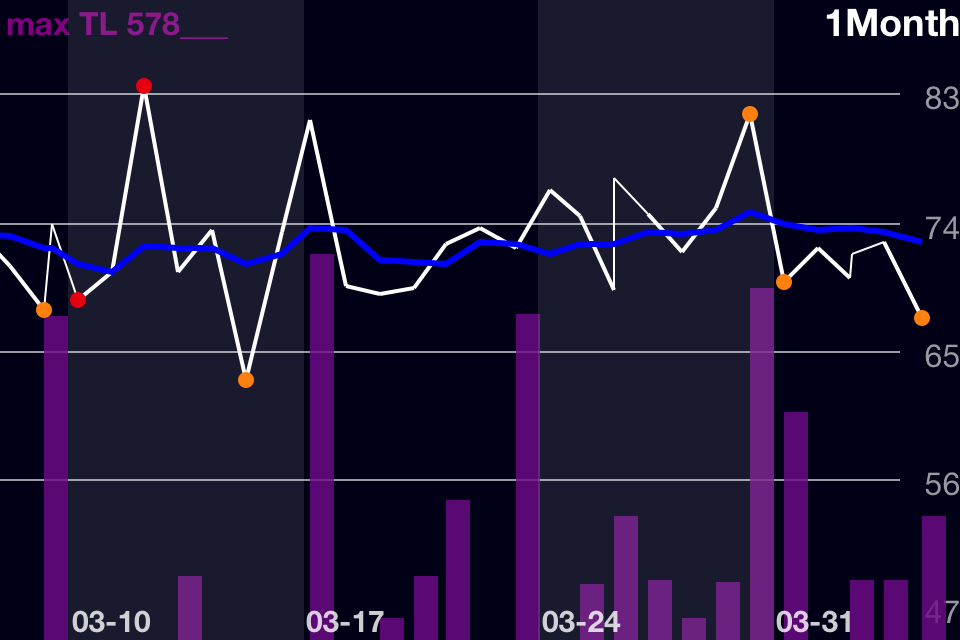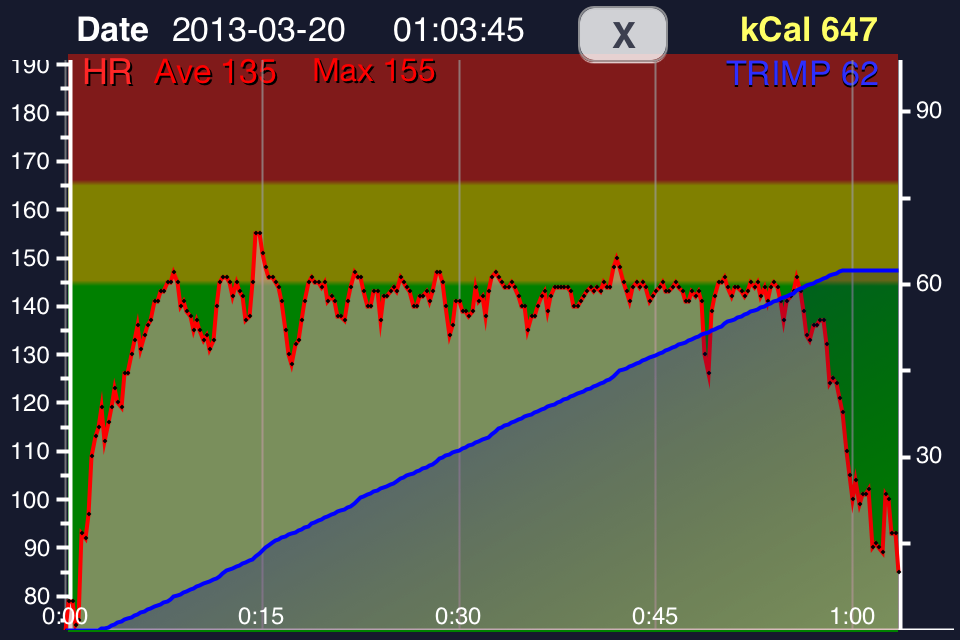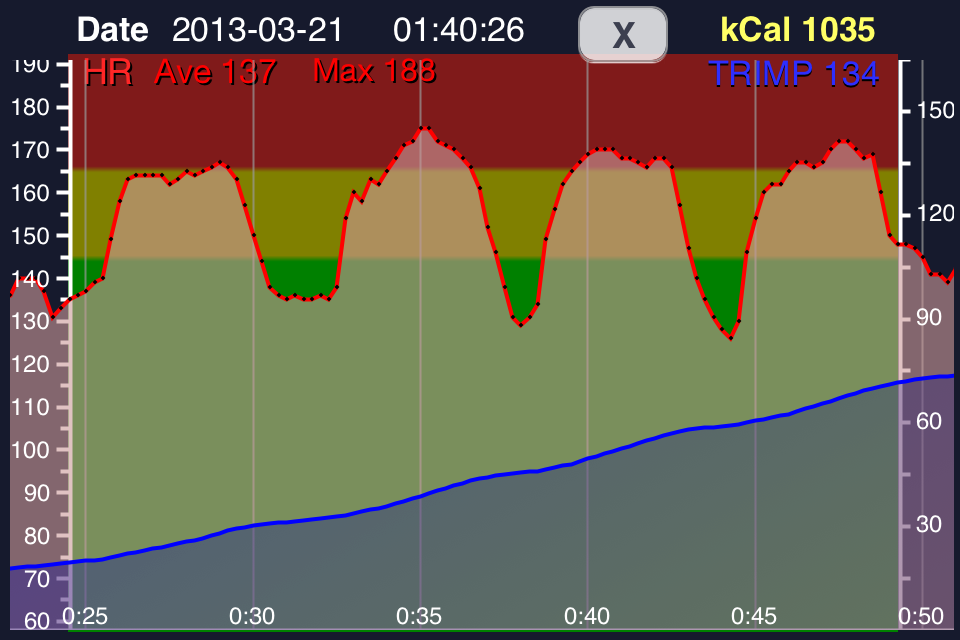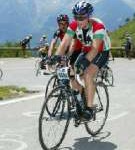Polarised Training – the first weeks
As promised, here is the first update on my progress having modified my training program from a ‘ride fairly hard fairly often’ to a program where I try to ride either below aerobic threshold (in my case a heart rate of 145 bpm) for a target of 80% of total time plus short periods of training at above lactate turnpoint (also known as 2nd ventilatory threshold, and respiratory compensation point) for 20% of total training time. This program requires actively avoiding training in the mid threshold region often used by default by recreational athletes – hard enough that it feels like productive work, but not so hard that you cannot sustain it for more than a few minutes at a time. For more on why I am attempting this challenge and the research behind it you might like to read my recent post, Research Summary: Threshold or Polarised endurance training; which produces the biggest performance gains?
The challenges
As I discovered almost immediately, this polarised program is not without its challenges. So far for me, these have included the following:
- The worst British ‘spring’ weather in living memory. It’s been bitterly cold and windy, and occasionally very wet, making outdoors training problematic.
- The inevitable viral cold, resulting probably from item (1) above, although I also have a family who are quite good at bringing home colds for the rest of us. During this period I have also had a tooth go bad, which has affected training for the past week and a half.
- Spending the right amount of time in the high intensity (HIT) region.
- Spending at least some time training with other people. I’m not someone who is so dedicated or self-sufficient that I can spend all my training time alone – I need company at least 2-3x a week.
My HRV chart for the month is shown below.
The reality
After a fairly good Saturday ride on March 9th, the following week was largely lost to a cold, with only a 1 hour aerobic ride midweek. These midweek aerobic rides are worth mentioning because I am planning on using these to calibrate progress on my aerobic efficiency in the following way:
- Choose a route that can be done regularly, that has few variables & disruptions such as traffic lights, busy junctions, traffic, unpredictable winds etc.
- Use a feedback tool that allows riding (or whatever your endurance sport is) at an intensity level just below aerobic threshold. In my case, I’m using the Precision Pulse HRM app to record the workout and a cheap analog HRM watch strapped to the handlebars for fine tuning the effort level.
- Perform the test weekly, preferably on the same day each week, at the same time of day.
- Either measure the time taken to complete the route (similar to MAF test), or in my case using the TRIMP training load number taken from the Precision Pulse app. Since the TRIMP uses both time and intensity level, the lower the training load number, the more efficient the body has become.
My TRIMP TL figures for the Wednesday rides are as follows:
March 13th 63
March 20th 62
March 27th 57
April 3rd 58
We need a few more samples before being able to determine if any changes are significant, though my training partner Gary Allan says they are getting faster. An example of one of these rides is shown below.

As you can see, I did not do a great job of staying within the green zone, partly due to the fact that the HRM on the handlebars is very slow in responding to changes. I will either need to get one which is faster or allow a bit of margin in my effort levels.
The next event to mention is a 100Km hilly early season sportive which I did on 17th March. Being hilly, I hoped that it would naturally separate itself into either hard efforts ascending or easy aerobic work descending. However, according to the Precision Pulse chart & metrics, I spent only 22 minutes out of 3:46 in zone 3, which is half the 45 minutes I would have spent if I had been strictly balancing the two in 80:20 proportions. Referring back to my earlier blog update and the chart of 4 min turbo intervals, the trouble with heart rate is that it lags effort, causing time in high intensity zone 3 to be substantially underestimated. Seiler and colleagues acknowledged this in the paper I referred to earlier, and propose an alternative to measure target time in zone instead. Cyclists with power meters and runners with foot speed pods or GPS can also get over this by measuring time in zone accurately. The problem then becomes determining the power level or speed that will be high enough to get them working in Zone 3 but not so high as they are unable to complete the intervals.
On Thurs 21, with an ithlete Heart Rate Variability (HRV) score a little above baseline, I did an outdoor intervals session of 4 minutes on, 2 minutes off (6 sets). Once again the Precision Pulse chart shows the HR lag, but also that I did spend time in Zone 3 in all sets.

Unfortunately, the last two weeks have been disrupted by a tooth problem that has been affecting my sleep, recovery and training. The good news is that it’s getting pulled out today and I hope for some really good training at the weekend. See how it goes in the next update…


Simon, is your aerobic threshold of 145bpm calculated using the Maffetone formula set within precision pulse? How many times a week are you doing the interval workout compared to the aerobic only workout?
Hi Andrew,
I did some lab tests 2 years ago which showed my aerobic threshold to be 146 bpm at that time, whereas the Maffetone 180 formula built into Precision Pulse indicated 139 bpm. So the latter is more conservative. This is not a problem, especially considering my difficulty in keeping just under the threshold, as visible in the chart above. There is some research indicating that HRV can be used to measure your aerobic threshold, and I would like to build a practical way to do this in future.
I can’t really say yet what the ratio of interval to aerobic workouts will be, as I’ve not settled into a solid pattern yet, but if my total training time is 9 hrs per week, then 20% is about 1:45. My current ability to keep going at HIT is about 30 mins per session total, so 3-4 sessions per week would be needed.